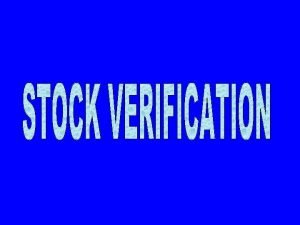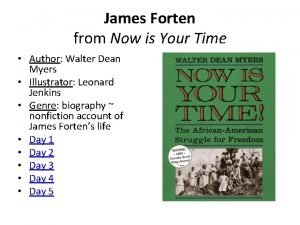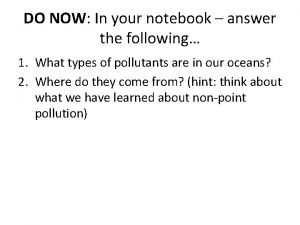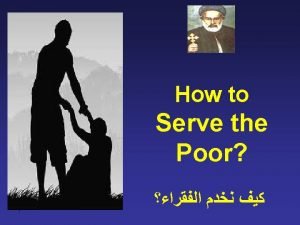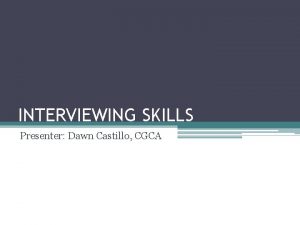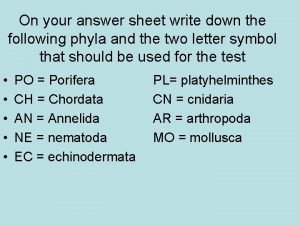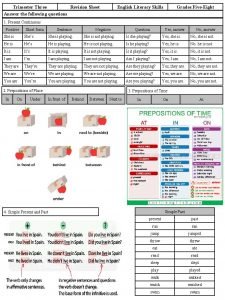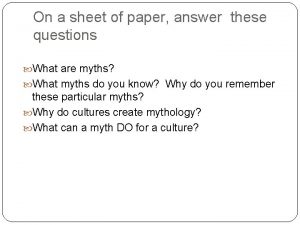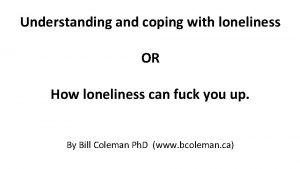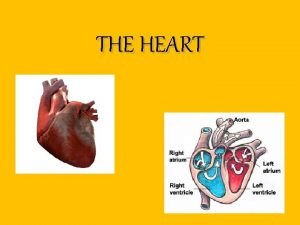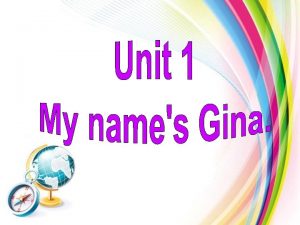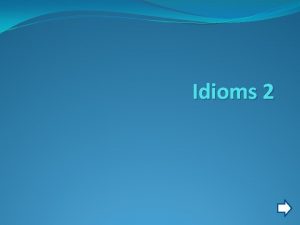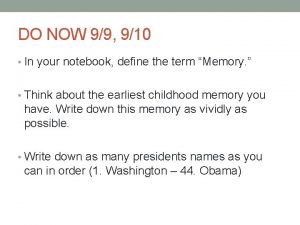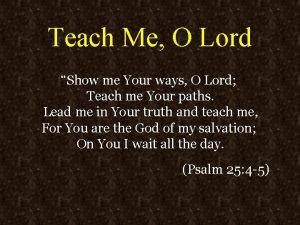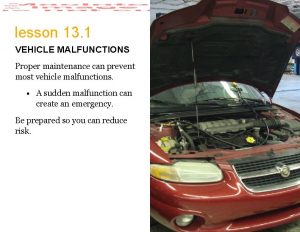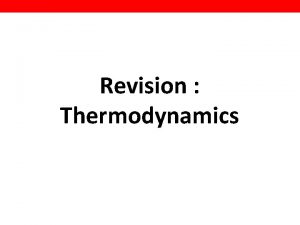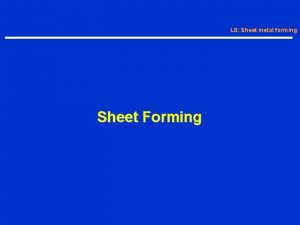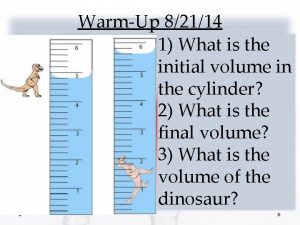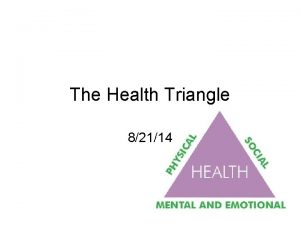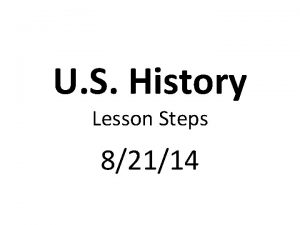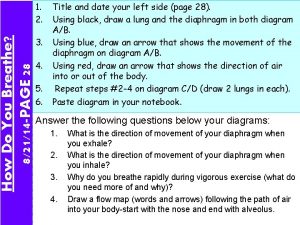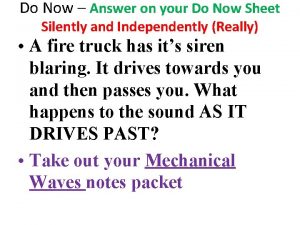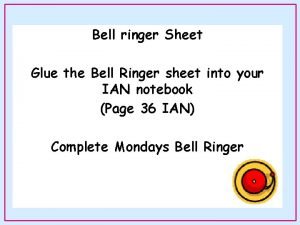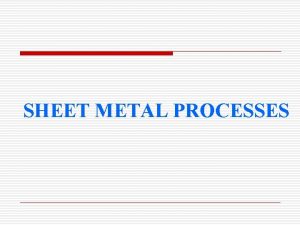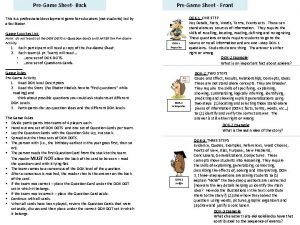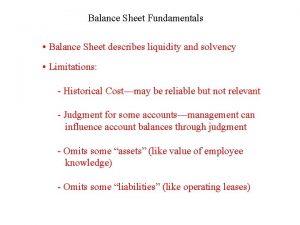DO NOW 82114 On your DO NOW sheet




























- Slides: 28

DO NOW 8/21/14 • On your DO NOW sheet, answer the following two questions: • 1. In your own words describe the “scientific method” • 2. Write down an example of the scientific method in your everyday life • (If you have questions – check yesterdays notes -- after that, raise your hand!) • WRITE THIS DOWN! Homework – – Finish data packet

Recording Data • Objective: SW demonstrate the computation and estimation skills necessary for analyzing data and developing reasonable scientific explanations. • Agenda: – First Five & Do Now – Metric Conversions & Practice – Scientific Notation & Practice – Final 5 • XT • Begin Homework!

THE METRIC SYSTEM WHY DO WE USE THE METRIC SYSTEM? • Almost all other countries are using the metric system • Other countries’ companies are refusing to buy products from the U. S. if not labeled in metric units • Scientists need a universal way to communicate data (SI Units) • (SI = Système International d'Unités)

• • • APPROXIMATE CONVERSIONS BETWEEN METRIC & US LENGTH UNITS A meter is about the same length as a yard A meter is about three feet long A decimeter is about four inches long An inch is about 25 millimeters A foot contains about 30 centimeters A foot contains about 3 decimeters

WHAT DOES THE METRIC SYSTEM MEASURE? • The gram measures mass or how much something weighs • The liter measures volume which is used when measuring liquids • The meter measures the length of an object or the distance from place to place

CONVERSIONS K I L O H E C T O D E K A B A S E D E C I C E N T I M I L L I

Abbreviations • • • Kilo: k (1000 units) ex. km Hecta: h (100 units) ex. hl Deca: da (10 units) ex. dag Deci: d (. 10 units) ex. dm Centi: c (. 01 units) ex. cg Mili: m (. 001 units) ex. ml

• Step 1: Determine if you are going to go up or down the ladder. • Step 2: Determine how many steps there are from one unit to another. • Step 3: Move the decimal point the amount of places that was determined in steps 1 & 2.

GUIDED PRACTICE PROBLEMS • 160 cm = _____mm • Step 1: Determine if you are going to go up or down the ladder. • Step 2: Determine how many steps there are from centimeters to millimeters. • Step 3: Move the decimal point the amount of places that was determined in steps 1 & 2.

GUIDED PRACTICE PROBLEMS • 160 cm = 1600 mm

GUIDED PRACTICE PROBLEMS • 1, 000 mg = _____g • Step 1: Determine if you are going to go up or down the ladder. • Step 2: Determine how many steps there are from milligrams to grams. • Step 3: Move the decimal point the amount of places that was determined in steps 1 & 2.

GUIDED PRACTICE PROBLEMS • 1, 000 mg = 1 g

GUIDED PRACTICE PROBLEMS • 250 m = _____km • Step 1: Determine if you are going to go up or down the ladder. • Step 2: Determine how many steps there are from meters to kilometers. • Step 3: Move the decimal point the amount of places that was determined in steps 1 & 2.

GUIDED PRACTICE PROBLEMS • 250 m =. 25 km

ROUNDING • IF the number you are rounding is followed by 1, 2, 3, or 4 the number stays the same • IF the number you are rounding is followed by 5, 6, 7, 8, or 9 round the number UP

ROUNDING PRACTICE PROBLEMS (round to the 100 ths place) • 1. 777777 • . 004 • 5. 689

ROUNDING PRACTICE PROBLEMS (round to the 100 ths place) • 1. 777777 1. 78 • . 004 . 00 • 5. 689 5. 69

YOUR TURN! • USING YOUR NOTES - Complete the conversion challenge worksheet SILENTLY AND INDEPENDENTLY. • Raise your hand if you have a question!

WELCOME TO SCIENTIFIC NOTATION! How many miles long is our universe?

How wide is our universe? 210, 000, 000, 000 miles (22 zeros) When numbers get this large, it is easier to write them in scientific notation.

Scientific Notation The number is written in two parts: Just the digits (with the decimal point placed after the first digit), followed by × 10 to a power that puts the decimal point where it should be (i. e. it shows how many places to move the decimal point).

Write the width of the universe in scientific notation. 210, 000, 000, 000 miles Where is the decimal point now? After the last zero. Where would you put the decimal to make this number be between 1 and 10? Between the 2 and the 1

2. 10, 000, 000, 000. How many decimal places did you move the decimal? 23 When the original number is more than 1, the exponent is positive. The answer in scientific notation is 2. 1 x 1023

1) Express 0. 0000000902 in scientific notation. Where would the decimal go to make the number be between 1 and 10? 9. 02 The decimal was moved how many places? 8 When the original number is less than 1, the exponent is negative. 9. 02 x 10 -8

1. Convert from real to scientific: 28750. 9 2. Convert from scientific to real: 4. 58 x 106

1. Convert from real to scientific: 28750. 9 2. 87509 x 10 4 2. Convert from scientific to real: 6 4. 58 x 10 4, 580, 000

Your Turn! • Silently and Independently • Raise your hand if you have any questions!

XT • • Convert the following units: 250 mg = _______g 476 L = _____ml 20 m = ______cm Write the following in scientific notation. 873, 000 270. 056
 Give us your hungry your tired your poor
Give us your hungry your tired your poor Now i see it now you don't
Now i see it now you don't Stock verification sheet is also known as what sheet
Stock verification sheet is also known as what sheet James forten from now is your time
James forten from now is your time Cover me under your wings
Cover me under your wings I will be still know you are god
I will be still know you are god Now write in your notebook
Now write in your notebook In your notebook answer the given question
In your notebook answer the given question Answer the questions in your notebook
Answer the questions in your notebook All star somebody once told me
All star somebody once told me Confirm your email now and get 5 minutes as a gift!
Confirm your email now and get 5 minutes as a gift! B. answer the following questions
B. answer the following questions Maya vray displacement
Maya vray displacement Now it's your turn write
Now it's your turn write Now it's your turn to interview or be interviewed
Now it's your turn to interview or be interviewed On your answer sheet answer the following question
On your answer sheet answer the following question In your answer sheet answer the following questions
In your answer sheet answer the following questions On a sheet of paper, answer the following questions.
On a sheet of paper, answer the following questions. Coping with gay loneliness
Coping with gay loneliness Stop blaming your parents for your problems
Stop blaming your parents for your problems What does the heart do
What does the heart do Pencil poem for child
Pencil poem for child Introduce your friend to your teacher
Introduce your friend to your teacher Cara ikatan buku sila
Cara ikatan buku sila In your notebook,describe the following
In your notebook,describe the following Enagic founder
Enagic founder Your conscious awareness of your own name and self identity
Your conscious awareness of your own name and self identity Lord show me your way
Lord show me your way If your vehicle malfunctions turn on your hazard lights
If your vehicle malfunctions turn on your hazard lights


